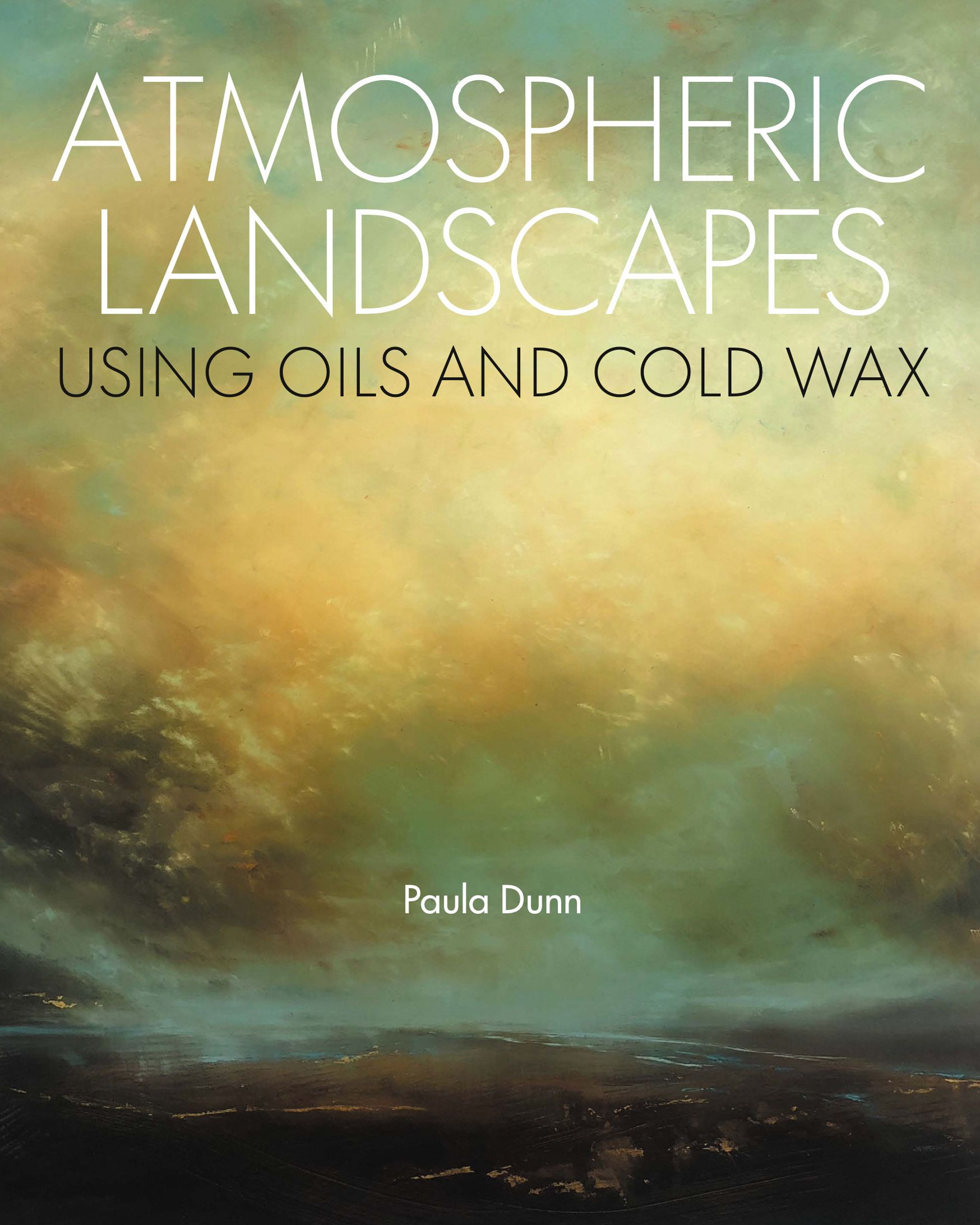
This October, Yorkshire-based landscape painter Paula Dunn will see the release of her debut book, Atmospheric Landscapes: Using Oils and Cold Wax (Crowood Press). Coinciding with the exhibition, the book will be available to purchase on site – offering visitors not only the chance to view her latest works but also to step into her studio process.
Atmospheric Landscapes is both an inspiring and practical guide for artists eager to explore the rich textures, luminous layers, and intuitive mark-making that define the cold wax medium. Through layering, scraping, and the interplay of transparent and opaque colour, Paula shows how to create landscapes that hold mystery and atmosphere, carrying the emotional weight of place. Structured around guided exercises, insightful demonstrations, and examples from her own practice, the book encourages experimentation, intuition, and personal artistic growth – equally valuable to beginners and seasoned painters.
“I’ve worked with oils for over twenty years,” Paula explains. “For the past seven, I’ve been teaching artists how to incorporate cold wax into their own practice.” Her journey with the medium began during a formative residency in Ireland with American abstract artist Rebecca Crowell. “Cold wax was entirely new to me at the time,” she recalls. “It invited a more instinctive, exploratory way of working – giving body to the paint while allowing for a richer, more expressive use of colour and texture.”
This shift marked a turning point. Where Paula had once painted large-scale, representational landscapes using thick impasto, she began moving towards a more experimental, abstract approach – building delicate, translucent layers and allowing memory, emotion, and a deep sense of place to guide the work.
Cold wax, she discovered, is an extraordinarily versatile medium. It opens up new possibilities: embedding materials like marble dust or gold leaf, dissolving paint with solvent, and pushing colour and tone into unexpected directions. These techniques have blurred the boundaries between abstraction and representation in her paintings, creating works that feel both grounded in the land and open to interpretation.
For Paula, one of the medium’s greatest strengths is its accessibility. “It frees artists from some of the rigid conventions of oil painting,” she says. “It encourages a spontaneity that leads to innovation and discovery.” It’s this freedom – the ability to follow the unpredictable path of colour, texture, and weather – that defines her practice and the pages of her new book.
)
)
)